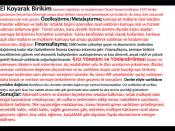The Bologna Process was officially launched with the Declaration of Bolonha1 in June 1999. The Bologna Process required a change in the traditional model of education while also affecting the social and cultural characteristics of a territory and population, emphasizing the need and benefit of life long learning. This new model boosts the willingness to reconsider curricula, contents and methods, in a constant pursuit for new knowledge, on each course in general and each subject in particular. Consequently, teachers are encouraged to research and to be more involved in the challenges of academic life, while students are encouraged to a fundamental change in attitude, since this model is equivalent to a worker on a 40 hours a week labor. Presence regime emerges as the preferential assessment in continuous evaluation.
Like all scientific areas, also the teaching of design was largely influenced by the paradigm shift resulting from the implementation of the Bologna model.
Pedagogy concerns emerging post Bologna, present themselves as new opportunities for reflection on content and academic facilities, and for the reasoning of the role of the teacher in the education program.
These concerns are not new, as they emerge repeatedly as you go carrying out reforms and adjustments to a model that is both dynamic and evolutionary.2 The analysis of the paradigm of post Bologna in comparison with what were the structures of the courses before, leads us to note that much has changed. The changes can be divided into three approaches: firstly, the conceptual approach, Bologna argues that the gathering of knowledge is based on the research capacity of the student thus giving so much more importance to programs and syllabus, as they are the special vehicles of study orientation of the student body; secondly we have the structural approach, the courses (mostly) reduced the...


